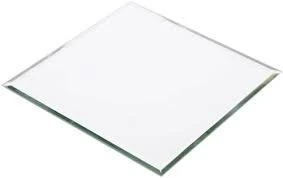

The Significance of Rearview Mirror Glass in Modern Vehicles
In the realm of automotive design, often, the smallest components play a crucial role in enhancing safety and functionality. Among these, rearview mirror glass stands out as an essential feature that contributes significantly to both driver awareness and passenger safety. This article delves into the importance of rearview mirror glass, its types, advancements, and its impact on modern driving experiences.
Rearview mirrors, whether located inside the vehicle or on the sides, provide crucial visibility to the driver. They offer a wide-angle view of the road behind, allowing drivers to monitor surrounding traffic and potential hazards without turning around. The glass used in these mirrors is specifically designed to minimize blind spots and provide a clear reflection, which is essential for safe driving.
Traditionally, rearview mirror glass was flat, but with advancements in technology, curved or convex glass has become increasingly common. Curved glass mirrors allow for a broader field of view, making it easier for drivers to spot vehicles that might be in their blind spots. This innovation has proven to significantly reduce the likelihood of accidents, particularly during lane changes and merging.

Moreover, modern rearview mirror glass often includes additional features aimed at enhancing safety. Many vehicles now come equipped with auto-dimming rearview mirrors. These mirrors utilize a special coating that detects light levels from vehicles behind the driver and automatically adjusts the glass tint to reduce glare, especially at night. This technology helps to maintain driver focus and significantly improves nighttime driving safety.
Another noteworthy advancement in rearview mirror glass is the integration of digital displays. Some modern vehicles now feature smart rearview mirrors that combine traditional mirror functionality with digital screens displaying real-time information, such as navigation directions, blind-spot monitoring, and rear-view feeds from cameras. This dual-functionality not only enhances the driver’s situational awareness but also aids in making informed decisions on the road.
In terms of maintenance, it is vital to ensure that the rearview mirror glass remains clean and free from scratches. Regular cleaning with appropriate materials can prevent obstructions and ensure optimal visibility. Additionally, any damages to the glass should be addressed promptly to maintain safety standards.
In conclusion, rearview mirror glass plays a pivotal role in enhancing the overall safety and functionality of vehicles. As technology evolves, the innovations surrounding this seemingly small component continue to improve driving experiences, making the roads safer for everyone. Investing in high-quality rearview mirror glass, understanding its functionalities, and utilizing the latest advancements can lead to better protection and a more enjoyable journey on the roads.